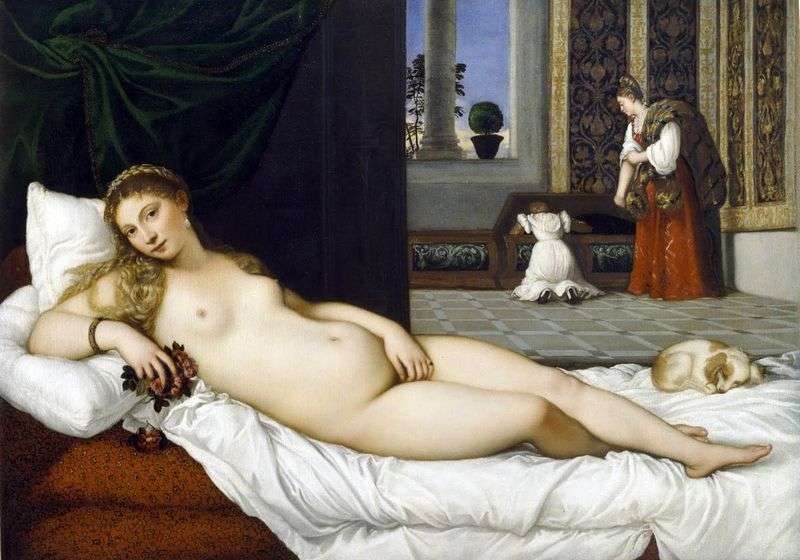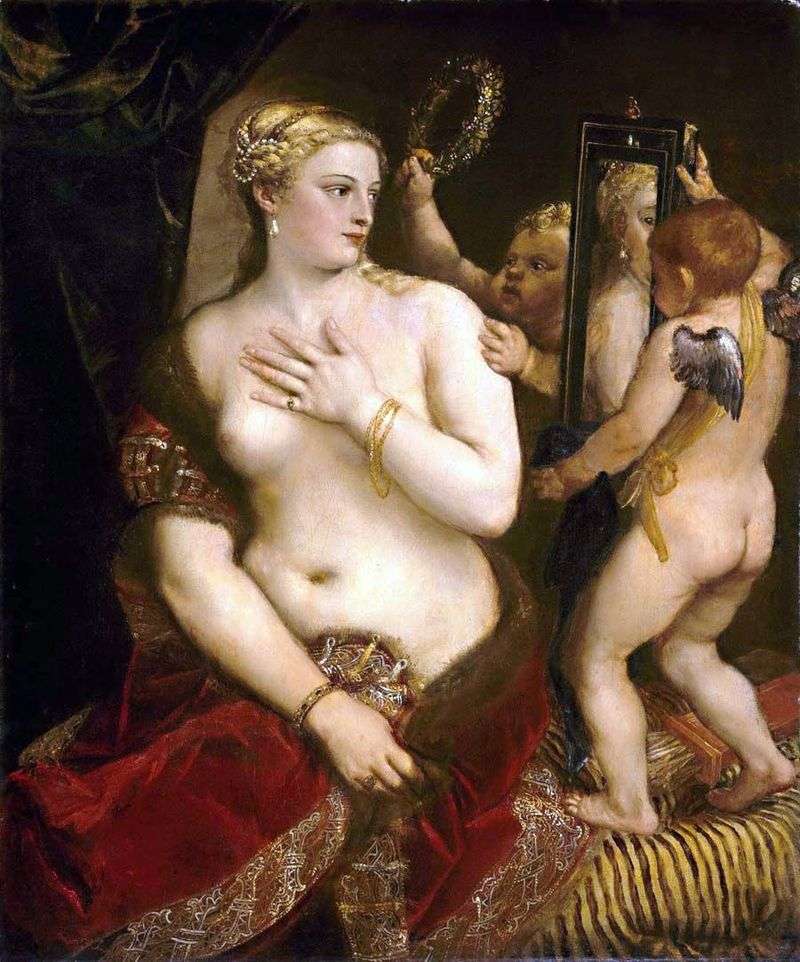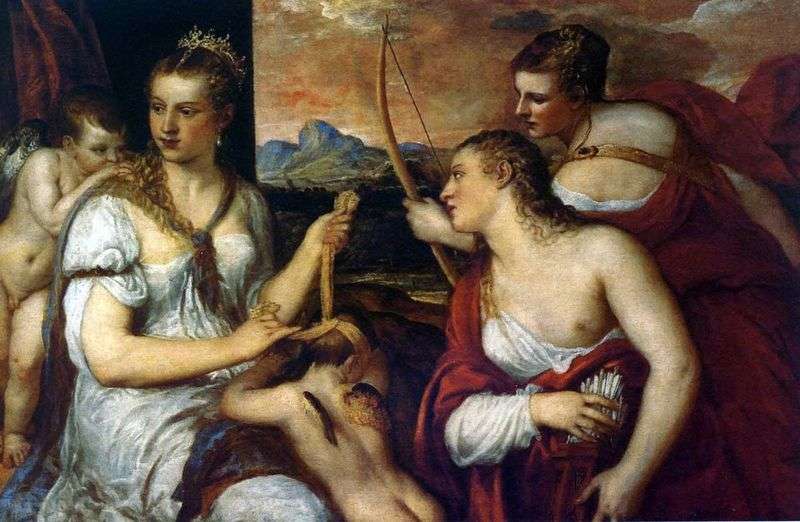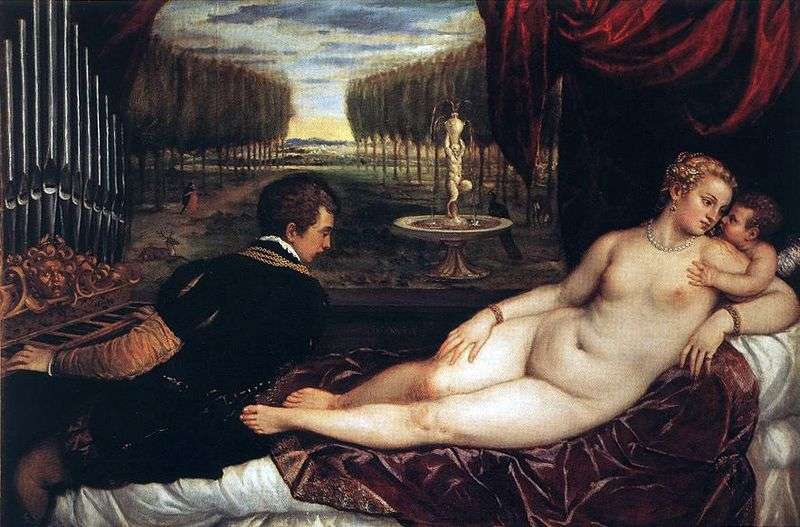
The ancient theme, often arose in the work of Titian, allowed this vivacious Venetian to throw out on the canvas all his admiration for the world and the ability to appreciate his beauty. The master loved antiquity as something alive and therefore boldly put the characters of Greek or Roman mythology in the contemporary situation.
His “Venus,” acquired by Guididaldo della Rovere, duke of Urbino, and therefore received its present name, represents a young Venetian, a beauty with a lively look, a tender body and golden hair. Her pose is reminiscent of the classic type “Venus Pudika,” that is, “shy,” but this girl, if a little embarrassed, is fully conscious of her beauty.
The picture echoes the “Sleeping Venus” of Giorgione, stored in the Dresden Picture Gallery, but Titian in the guise of a goddess is more sensual. However, this sensuality is deceptive. The artist chose the room where everything breathes the comfort of a strong house: in the background the maid is looking for something in the chest, and the other looks at her in anticipation.
On the window there is a myrtle – the symbol of marriage life, white sheets are sent on the bed and white pillows are thrown about the purity of the woman lying on them, at the feet of which a little dog, symbolizing devotion, curled up. Thus, the hidden meaning of the picture should be understood as conjugal love.
 Venus with a mirror by Titian Vecellio
Venus with a mirror by Titian Vecellio Venus Urbinskaya – Titian Vecellio
Venus Urbinskaya – Titian Vecellio Venus, tied Amur’s eyes by Titian Vecellio
Venus, tied Amur’s eyes by Titian Vecellio Venus of Urbino by Titian Vecellio
Venus of Urbino by Titian Vecellio Venera with organist and cupid by Titian Vecellio
Venera with organist and cupid by Titian Vecellio Venus and Adonis by Titian Vecellio
Venus and Adonis by Titian Vecellio The Festival of Venus (Bacchanalia of Babies) by Titian Vecellio
The Festival of Venus (Bacchanalia of Babies) by Titian Vecellio Portrait of the daughter of Titian Lavinia by Titian Vecellio
Portrait of the daughter of Titian Lavinia by Titian Vecellio